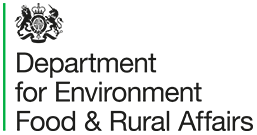Consultation on modernising environmental permitting for industry
Chapter 3: Proportionate regulation and coherence in the framework
The previous chapters covered the approach to innovation under the framework and the approach to setting industrial emissions standards. This chapter considers the fundamental question of the sectoral scope of permitting and ensuring it is consistent with climate, energy and circular economy policy and developing technology.
The sectoral scope of the industry elements of the EPRs were largely developed in the 2000s, well before many of the current generation of clean technologies emerged. Whilst polluting activities need to be regulated carefully, in certain cases regulation is too onerous on low-risk clean technologies. In other cases, potentially polluting technologies are excluded entirely from regulation – not only does this undermine health and environmental protection, but the lack of clarity on the regulatory position for these technologies can undermine industry planning and investment.
The government has committed to deliver clean power by 2030, net zero by 2050 and to publish a Circular Economy Strategy in Autumn 2025. The environmental permitting framework has an important role to play in delivering these commitments by ensuring emerging technologies and supply chains have a stable, proportionate and coherent regulatory framework, which protects local communities and the environment whilst enabling the required rapid expansion of these sectors. Regulation of these technologies should be based on the risk presented to public health and the environment and streamlined where possible, which will also deliver significant benefits for the growth of emerging sectors. We must also ensure that activities are regulated by the most appropriate regulator according to the level of risk associated with those activities. In addition, the EPRs and accompanying guidance have amassed themselves over time through various EU directives and domestic statutory instruments - they are outdated, complex and difficult to interpret. The framework as a whole requires reform to create a more coherent permitting system that is easier to understand.
In the following sections we explore proposals to address these issues, including:
-
flexible tiers of regulation
-
streamlining regulation for low-risk activities
-
regulation of new net zero and circular economy activities
-
reconsidering regulator roles and responsibilities
-
simplification of the EPRs and related guidance
Further detailed policy development and consultation will be required on all of these proposals, which will be shaped by the responses to this consultation. We will also engage with the devolved governments to try and agree UK-wide approaches where possible.
We are separately considering the position on how future environmental permitting requirements might apply to the agriculture sector (beyond the existing coverage of pig and poultry rearing above specified thresholds). For this reason, they are not within the scope of the current consultation.
